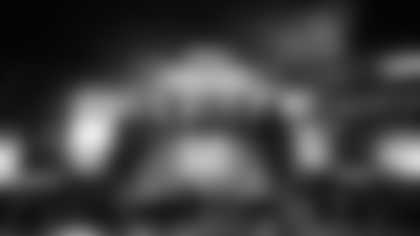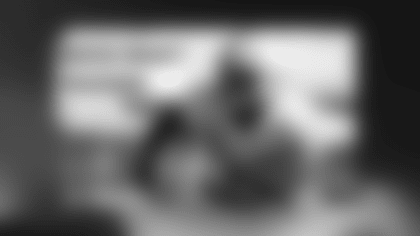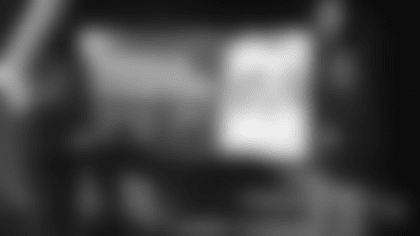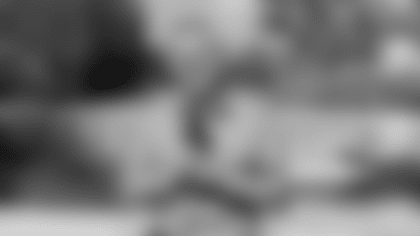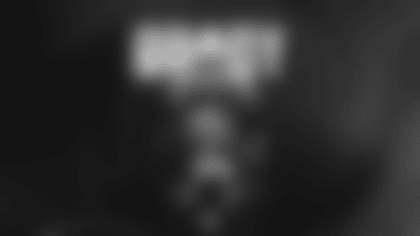SAN ANTONIO (Sept. 28, 2005) -- The line snaked for a quarter mile.
Thousands of football-starved fans were jumping at the chance to buy tickets to see the New Orleans Saints -- and for a chance to show how the nation's eighth-largest city can support an NFL team.
The mayor and business leaders are trying to rally the city to support the Saints, who were forced here when Hurricane Katrina swamped their city, and prove San Antonio is a major market worthy of an NFL franchise. sport.
"It's unfortunate that it took these circumstance to get these games over here, but it will show San Antonio is ready for a team," said Red McCombs, a San Antonio resident and former owner of the Spurs and the Minnesota Vikings.
The NFL placed the Saints here for three games at the Alamodome this season, starting with Sunday's matchup with the Buffalo Bills. The Saints will play four games in Baton Rouge, La.
Little by little, the Alamodome is getting dressed up for the Saints. Team offices occupy much of the space of the lower levels and giant "SAINTS" signs decorate the outside.
"The way we've been treated here so far, knowing that we're going through some things, it's been phenomenal," said Saints wide receiver Joe Horn.
But questions remain about where they Saints will be in the future -- Los Angeles is still the NFL's favorite for a relocated franchise. Moreover, San Antonio's leaders are careful to note they're not trying to cash in on New Orleans' misfortune.
"It's improper to talk about trying to bring the team here. New Orleans is a city flat on its back," said Henry Cisneros, a former San Antonio mayor and Clinton administration official. "Then the best way we can show we deserve a team of our own no matter what is to fill the Alamodome three times."
Although the city sold about 50,000 tickets for the three Saints games that first day, as of Sept. 28, more than 14,000 were available for Sunday's game. If it isn't a sellout, the NFL could institute a local television blackout.
San Antonio has flirted with the NFL before.
Hoping to lure an expansion team in the early 1990s, the city built the multipurpose Alamodome. The arena has hosted the NCAA men's and women's basketball Final Four, the Alamo Bowl and used to be the home of the NBA's Spurs. The Canadian Football League came and went -- the San Antonio Texans of the CFL played in the Alamodome in 1995.
At about 65,000 for football games, the seating capacity is on the small side by NFL standards. And its 38 luxury boxes are far fewer than the league's newer arenas.
The league rejected San Antonio a decade ago in part because it was considered too poor, said Char Miller, a professor of urban studies at Trinity University in San Antonio.
"We neither had the population or economic base that would support a team," Miller said. "The city didn't have the kind of wealth it needed. It didn't have a large enough middle class to pay the type of prices for NFL tickets."
The city has enjoyed an economic explosion over the last 15 years.
Communications giant SBC has its headquarters in San Antonio, along with four other Fortune 500 companies, giving the city corporate spending power necessary to buy sponsorship deals, luxury boxes and stadium naming rights.
Yet it still lags behind other cities. According to the Texas State Data Center at the University of Texas-San Antonio, the city's median household income of $39,018 ranks below Texas' other NFL cities, Dallas ($48,068) and Houston ($44,458).
And while the city ranks in the nation's top 10 in population, the overall metro area ranks is 30th. The television market is even smaller.
San Antonio leaders argue that Austin, 75 miles to the north, and the exploding population in the Rio Grande Valley would be part of their market. Austin would bring a wealthier economic base and more potential corporate sponsors like Dell Computer.
Yet nothing San Antonio does or says might be enough.
NFL Commissioner Paul Tagliabue seems determined to keep looking at Los Angeles. In a recent interview with New Orleans Times-Picayune, he suggested San Antonio is a "small market."
"Ever since we approved the move of the Raiders and the Rams, I've been saying that our goal is to get a team back to L.A., either through expansion or whatever, and were not going to be moving any teams into small markets," he said. "We're going to be moving up in market size, not either down or flat. That's our goal."
Still, San Antonio Mayor Phil Hardberger remains upbeat.
"We think that we can fill up the Alamodome," he said, "to show the doubters out there what kind of city San Antonio is and that there is great interest in the NFL."








